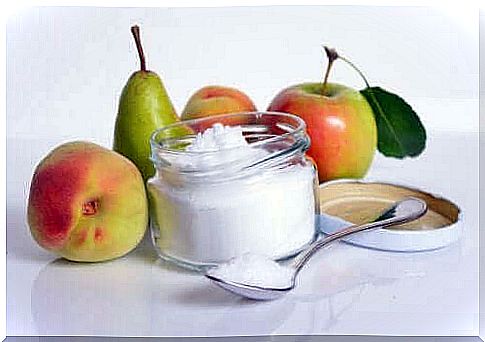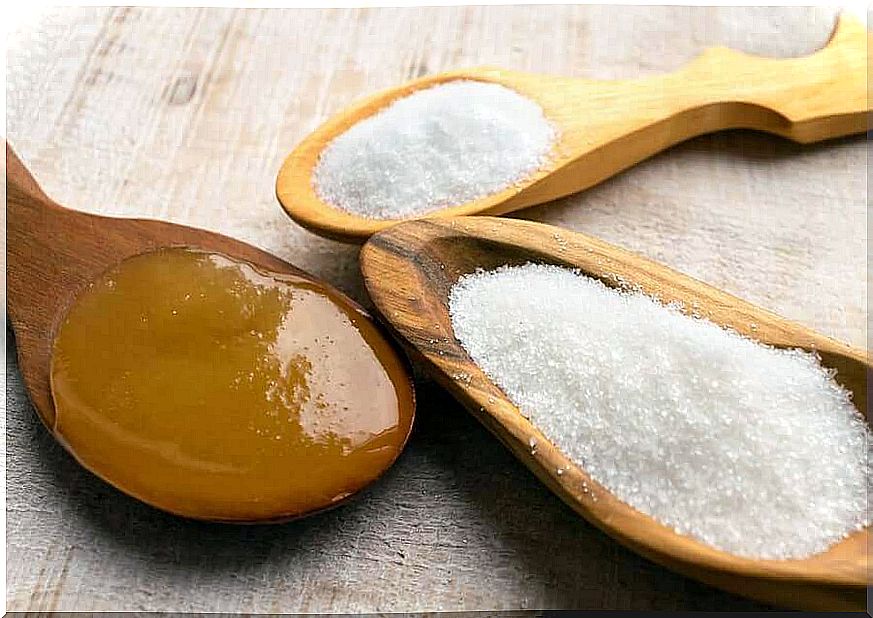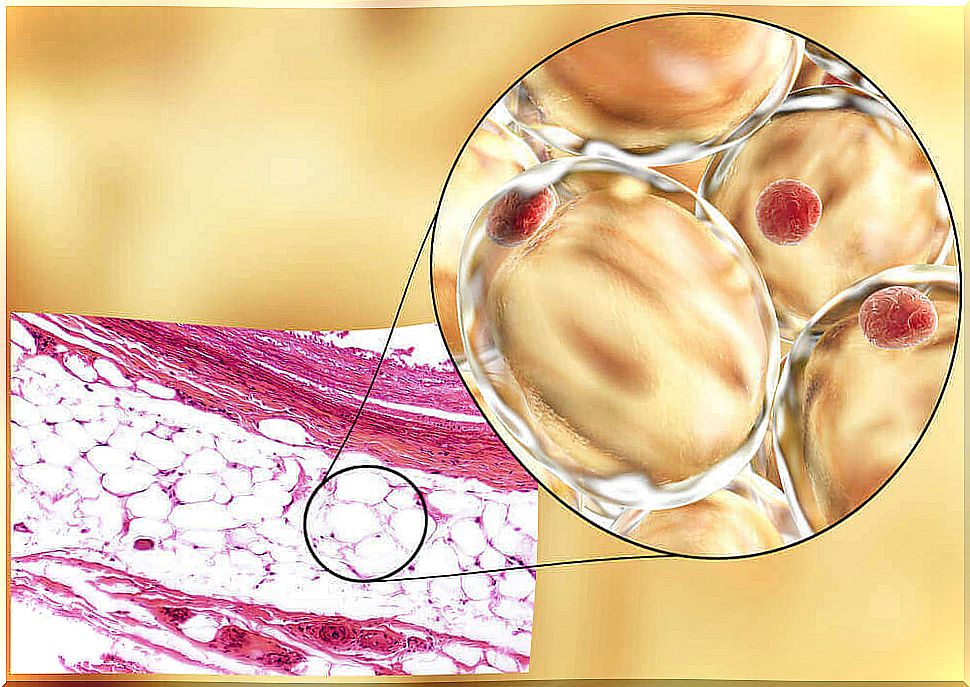What Are The Differences Between Glucose And Fructose?

Do you know the differences between glucose and fructose? Do you know which of the two is better for you? Both are isomers. That is, they have the same chemical structure, but their molecular structure is different. Therefore, their metabolic pathways differ and, as a result, the effects they have on the body.
Glucose
Glucose, like fructose, is a monosaccharide. It has a high glycemic index and is therefore a substance that raises blood glucose as quickly as it is absorbed. This makes it an unhealthy substance for health, as stated in an article published in the journal Cell Metabolism .
Glucose is the substance most capable of raising blood glucose. It is found in many foods in the form of glucose or starch (binding of glucose molecules).
As a sweetener, however, it is hard to find at home in any form other than table sugar. The ordinary consumer can already find it in its pure form in the same form that the food industry has been using for years: dextrose.
fructose
Fructose is the sugar with the greatest sweetening power. Paradoxically, its ability to raise blood glucose is much lower than that of glucose. The glycemic index is even classified as low.
Unlike glucose, it is easy to find everywhere for home use. It is also the food industry’s favorite sweetener due to its low cost and extremely sweet taste.
Consuming it as a sweetener became popular in the 1960s due to its low cost and the emergence of studies showing its low glycemic index.
In foods, we find fructose mainly in fruit. However, the harm we are now talking about cannot be attributed to eating fruit. The density of fructose is very low and the presence of fiber in fruit reduces and delays the absorption of fructose.
Cardiometabolic Differences Between Glucose and Fructose

The structural differences between glucose and fructose cause their metabolic pathways to differ from each other. Therefore, its impact on the body is also different. We will explain that further below.
The energetic fuel of the body
Glucose reaches all cells in the body via specific transporters (particularly GLUT2, GLUT3 and GLUT4). This means that all cells use glucose as their main energy fuel.
However, fructose uses GLUT5 transporters and can only make liver glycogen and fatty acids. That is, it is only absorbed by hepatocytes and adipocytes. This results in less chance of muscle consumption and a greater tendency to store body fat.
Fructose, glucose and adiponectin

Adiponectin is a protein mainly secreted by adipocytes and cardiomyocytes. The level is inversely related to body fat percentage and production is reduced in obesity and diabetes mellitus. It also plays an important role in regulating energy metabolism as this protein:
- promotes the oxidation of fatty acids.
- it reduces plasma triglycerides.
- increases insulin sensitivity.
Metabolic Control
The metabolic pathway of fructose is less controlled than that of glucose. For example, fructose does not rely on sodium to enter cells. So all fructose goes from the gut to the liver to be metabolized.
Fructose also cannot be stored in the form of muscle glycogen or used by cells other than adipocytes and hepatocytes. This, along with the ease with which fructose enters the cell, results in a rapid activation of lipogenesis (the formation of body fat).
Fructose and fatty acids
Fructose reduces the oxidation of fatty acids and increases lipid synthesis in the liver. Thus, its overuse has been linked to liver overload and fatty liver.
If we take into account that most ultra-processed foods contain it and that in modern society we tend to consume a lot of ultra-processed foods, it is actually quite clear that achieving excessive consumption is quite easy. The excess seems even easier when we consider that many people choose it as a sweetener because of its lower glycemic index.
The effect of glucose and fructose intake on aortic relaxation
Akther, Alegret, Laguna, Roglans, Roshanak, Sangüesa & Shaligram (2017) studied the effects of glucose and fructose consumption in a population of rats exposed to nitric oxide and found that the aortic artery was less able to relax in rats fed fructose.
This leads to a worse cardiovascular condition and a reduced response to the most commonly used drug treatment (nitroglycerin) in ischemic heart disease (obstruction of blood flow to the heart muscle).
Fructose leads to a worse metabolic and cardiovascular condition

Based on all of the above, studies show that while glucose consumption increases appetite, fructose is probably the carbohydrate with the highest obesogenic capacity. Its consumption has been linked to metabolic syndrome.
Also, fructose consumption has been associated with problems such as insulin resistance, a poorer lipid profile, and an inadequate cardiovascular response.
Practical Considerations About Glucose and Fructose
We already know the differences between glucose and fructose and their impact on health, but what does this information mean in our daily lives? We will answer some questions about this.
What should I do with fructose?
As we have already seen, despite its lower glycemic index than glucose, fructose consumption means an endless number of negative effects that can lead to increased obesity, diabetes, liver disease and all that these problems bring.
In that sense, we should keep in mind that most ultra-processed foods contain fructose. So now you have one more reason to stop consuming ultra-processed foods!
When do you consume glucose?
One of the main differences between glucose and fructose is their ability to raise blood glucose. Therefore, we should choose to consume glucose only when we need a quick energy boost. This is, for example, during the practice of intensive physical exertion or at the end of it.
If the energy requirement is very high (intense physical activity > than 2.5-3 hours), we recommend choosing combined carbohydrates with a high glycemic index. This can be honey, table sugar or the simultaneous use of glucose and fructose. In this way you saturate all transporters that transport the sugar to the cells and thus meet the energy demand.
Doctors don’t recommend glucose and fructose
In all other circumstances, however, we should try to avoid glucose. At the same time, we should also not opt for fructose, because, despite the low glycemic index, it has a very negative cardiometabolic impact.
Neither glucose and fructose nor heat-modifying sweeteners are good alternatives for people who are overweight, obese or have diabetes mellitus. Nor is the use of heat-affected sweeteners a good alternative.









